All about geogrids
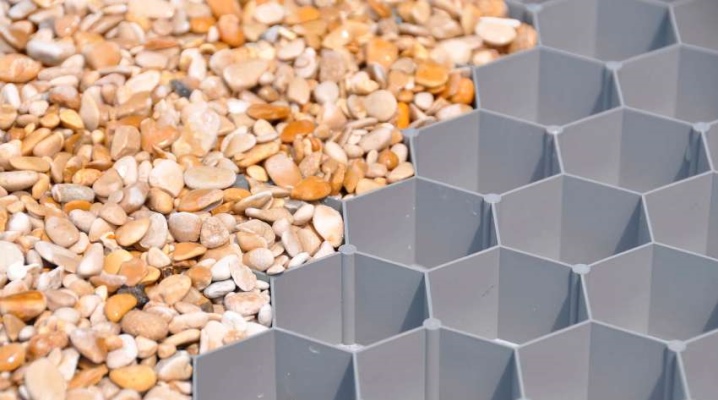
Geogrids - what they are and what they are for: this question is increasingly arising among the owners of summer cottages and suburban areas, owners of private houses. Indeed, concrete and other types of this material attract attention with their versatility, their use for road construction and for the construction of paths in the country has already gained popularity. Geogrids are confidently becoming a popular element of landscape design - this is a good reason to learn a little more about them.
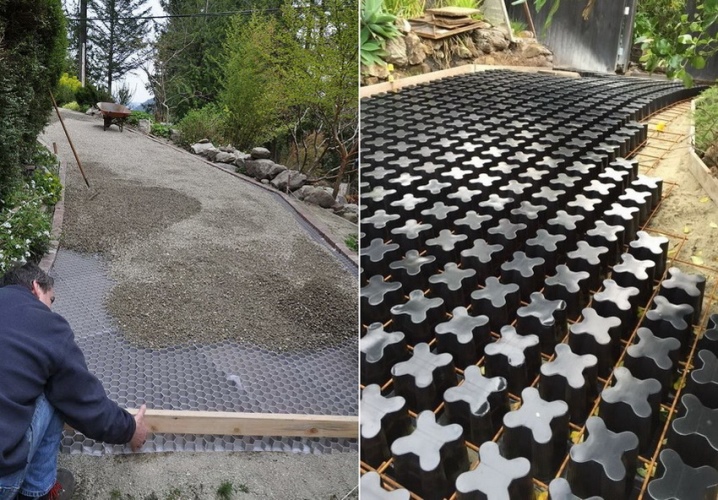
Peculiarities
It is not for nothing that the geogrid is called a new generation material. Even landscape design professionals did not even know what it is a few years ago. A wide range of materials are used as the basis for the geogrid - from artificial stone and basalt to non-woven fibers. In road construction, HDPE or LDPE products are most often used with standard wall heights from 50 to 200 mm and a module weight of 275 × 600 cm or 300 × 680 cm from 9 to 48 kg.
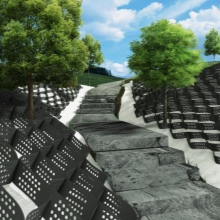
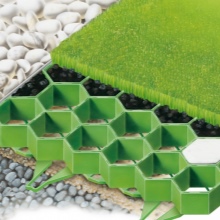

The geogrid device is quite simple. It is made in the form of sheets or mats with a cellular structure, belongs to the category of geosynthetic structures, is performed in a flat or three-dimensional form. The material can stretch vertically and horizontally, forming a frame for filling with reinforcing components. In this capacity, sand, crushed stone, various soils or a mixture of these substances usually act.
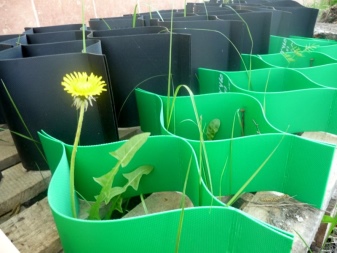
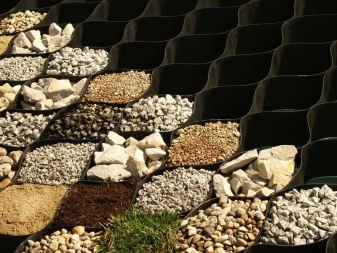
The size of the honeycomb and their number depend solely on the purpose of the product. The connection of the sections to each other is carried out by a welded method, in a checkerboard pattern. Geogrids are attached to the ground using special reinforcement or anchors. In volumetric geogrids, the height and length of the honeycomb varies from 5 to 30 cm. Such a structure retains its functionality for 50 years or more, it is resistant to various external influences, withstands significant temperature drops - from +60 to -60 degrees.
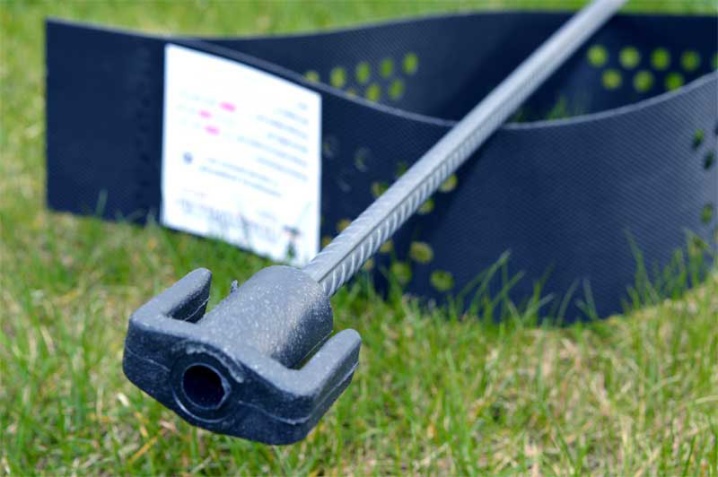
Application
Geogrids are widely used. Depending on the purpose, they are used for the following purposes.
- For road construction. The use of a geogrid for a road made of rubble or filling under concrete, asphalt allows you to make its base more stable, to avoid its displacement. Having taken such measures, there is no need to worry that the formed canvas will crack, crumble due to the unstable "pillow".
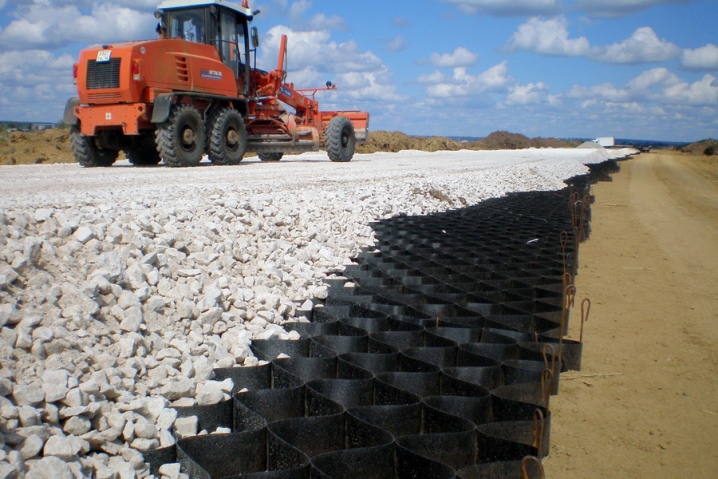
- For strengthening loose and inhomogeneous soils... With the help of a geogrid, the problem of their flowability is successfully solved, and effective drainage of the site is ensured. These cellular structures work in a similar way against soil erosion on slope strips.

- To form retaining walls... With the help of volumetric cellular sections, gabions with different heights and angles are created.

- For eco-parking... Honeycomb concrete parking grids look much better than solid slabs. They can also be used to create paths in the country, when arranging access roads. Here, geotextile is always laid at the base of the structure, especially if the soil has a clay, peat composition or the groundwater level is too high.
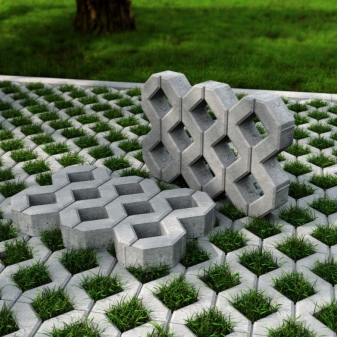

- For the lawn, playground. In this case, the geogrid becomes the basis for sowing seeds, helping to avoid the spread of the grass carpet beyond the established boundaries. These elements are used to form grassy tennis courts.
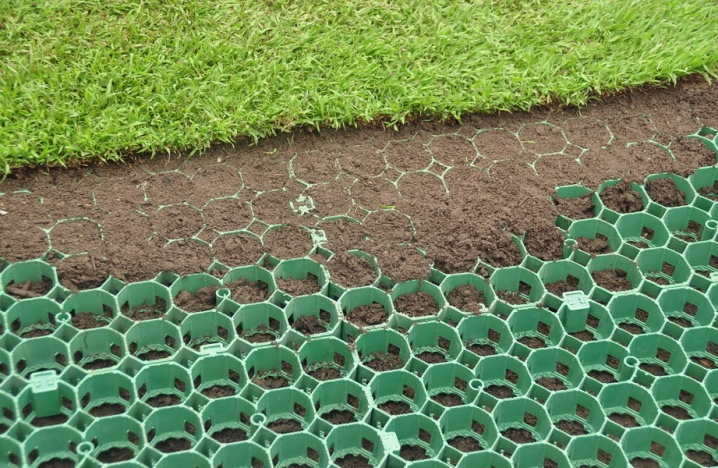
- To enhance the crumbling coastline. If the site is near a reservoir, it is imperative to reinforce the most vulnerable places. In this case, a volumetric geogrid will be the best choice, it will reliably strengthen slopes even with difficult terrain.
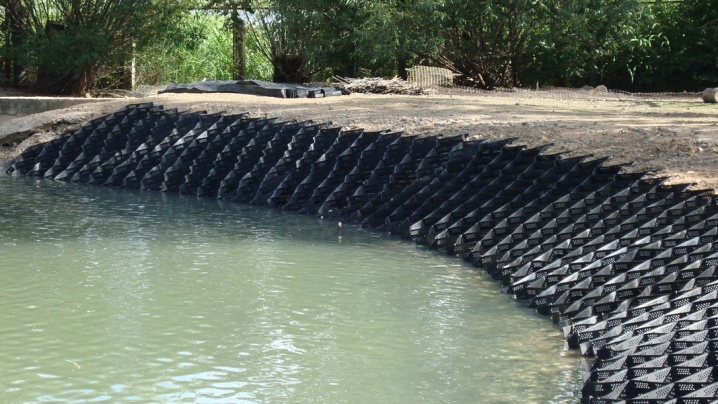
- For the construction of a covering for parking lots. Here geogrids help to make the base more durable, as in road construction, it prevents the "cushion" of sand and crushed stone from shattering.
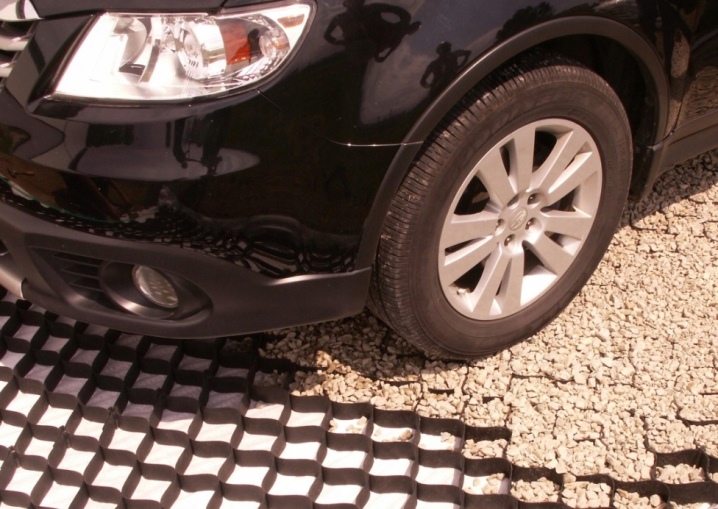
- For the formation of landscape elements. In this area, volumetric gratings are used to create artificial terraces and embankments, hills, and other multi-level structures. In landscape design, volumetric geogrids are especially in demand and popular.
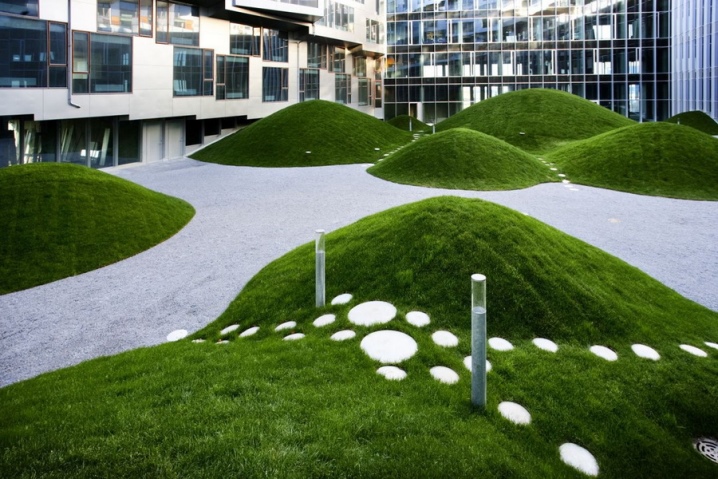
The original purpose of the geogrids was to eliminate problems associated with erosion and soil shedding. In the future, the scope of their application has expanded significantly, making it possible to make this element as useful as possible for civil and road construction.
How is it different from a geogrid?
The main differences between a geogrid and a geogrid lie in the volumetric structure. In the first case, it is always flat, in the second - three-dimensional, has cells filled with reinforcing components. In practice, the difference is small, moreover, in most countries of the world there is no concept of “geogrid” at all. All products of this type are referred to as lattices, dividing them only by the type of material used. For example, the term "geogrid" can mean a braided structure made of fiberglass, polyester, impregnated with a bitumen or polymer composition.
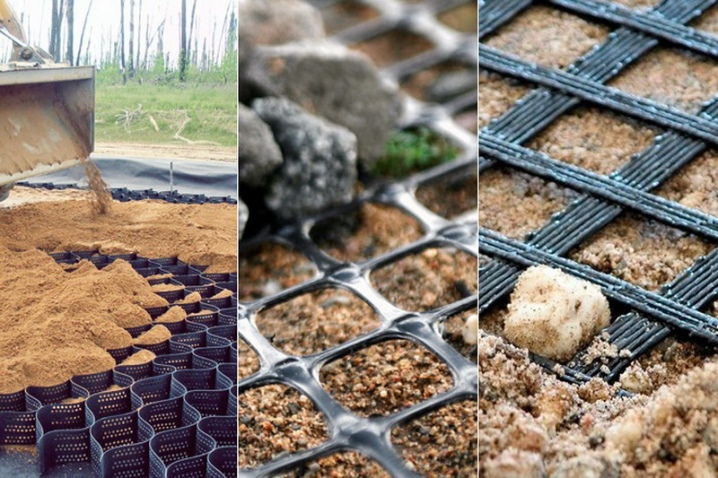
In addition, geogrids are necessarily perforated and stretched during production. In this case, the nodal points of the finished material become stationary, provide a more uniform distribution of loads over the surface during operation.
Geogrids are also called flat gratings, their main purpose is to fix the crushed stone poured between the cells. It provides mechanical soil stabilization, acts as a reinforcing layer for the roadway. Geogrids of volumetric type are laid, fixing them with anchors, and the ways of their use are much more varied.
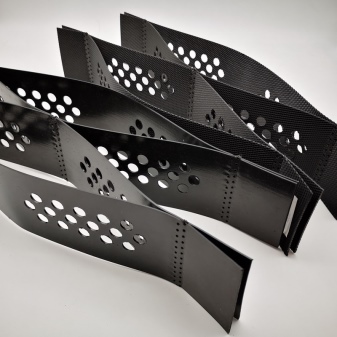
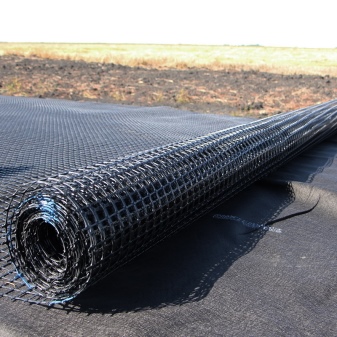
Views
Reinforcing geogrid is divided into types, according to several classification criteria. The division is carried out according to the type of construction, type of material, and the presence of perforations. All of these factors are important in choosing the right type of geogrid.
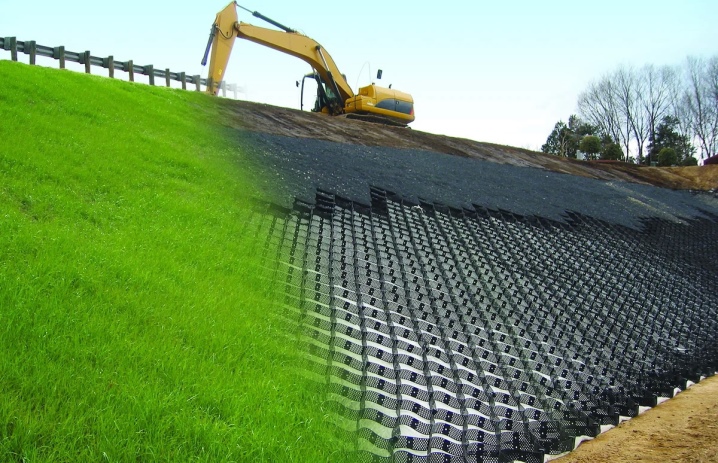
By stretching
Uniaxial design available in pre-fabricated sections rectangularstretching in only 1 direction. When deformed, the fabric retains sufficient rigidity, in the longitudinal direction it is able to withstand high loads. The cells are elongated longitudinally; their transverse side is always shorter. This product option is one of the cheapest.
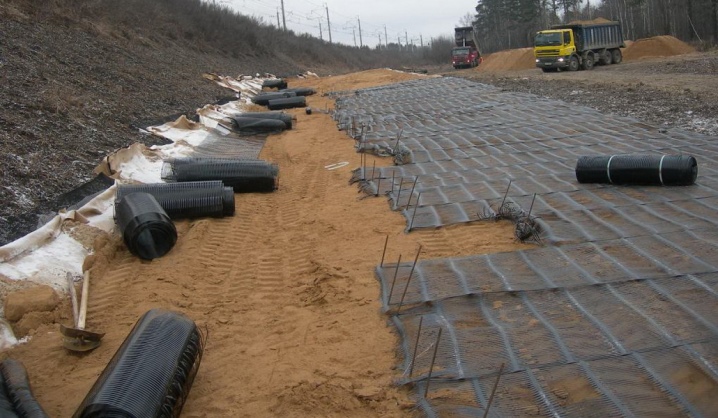
Biaxial Geogrid has the ability to stretch in the longitudinal and transverse directions. In this case, the cells have a square shape, better withstand deformation loads. The biaxially oriented version of the grating is the most resistant to breaking action, including soil heaving. Its use is in demand in landscape design, when arranging slopes and slopes.

Triaxial Geogrid - construction made of polypropylene, providing even distribution of loads 360 degrees. The sheet is perforated during processing, acquiring a cellular structure, stretched in the longitudinal and transverse directions. This variety can rather be called a reinforcing element; it is used where the soil is unstable in composition.
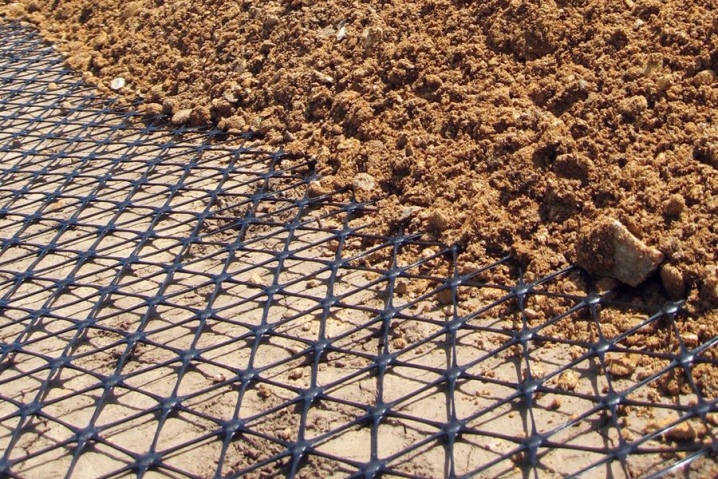
By volume
A flat geogrid is also referred to as a geogrid. The height of its cells rarely exceeds 50 mm; products are made of rigid polymer, concrete, composite compounds. Such structures are used as a reinforcing base for lawn and garden structures, paths, driveways, and can withstand heavy mechanical loads.
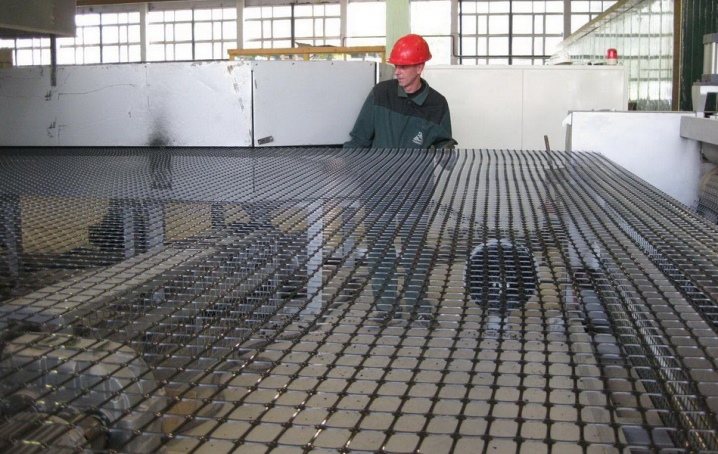
The volumetric geogrid is made of polyester, polyethylene, polypropylene with sufficient elasticity. Such structures are strong, durable and elastic, they are not afraid of the aggressive effects of the external environment. When folded, they look more like a flat tourniquet. Straightened and fixed on the ground, the grille acquires the required volume. Such products can have a solid or perforated structure.

The second option allows you to more efficiently remove moisture, which is especially important with heavy rainfall. Among the advantages of perforated geogrids, one can single out a higher level of adhesion to the ground. In this case, with the help of volumetric structures, it is possible to strengthen the soil at a slope of more than 30 degrees.
By type of material
All geogrids marketed today are manufactured industrially. Most often, they are based on plastics or combined substances. Depending on the subspecies, the following basis is used.
- With rolled geotextile... Such geogrids have a volumetric structure, are suitable for strengthening crumbling soil areas, help to avoid soil heaving due to frost and groundwater. The non-woven structure of the material provides the best conditions for resisting chemical and biological external factors.
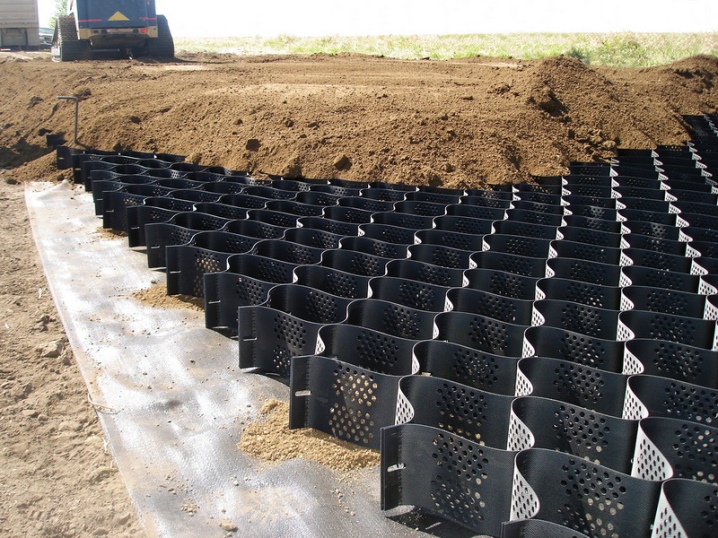
- Polyester... Designed to fix unstable free-flowing soil structure. It is used on sandy and crushed stone soils, including when forming a multi-layer asphalt concrete bed. Polyester gratings are available, equipped with additional backing and fully open.
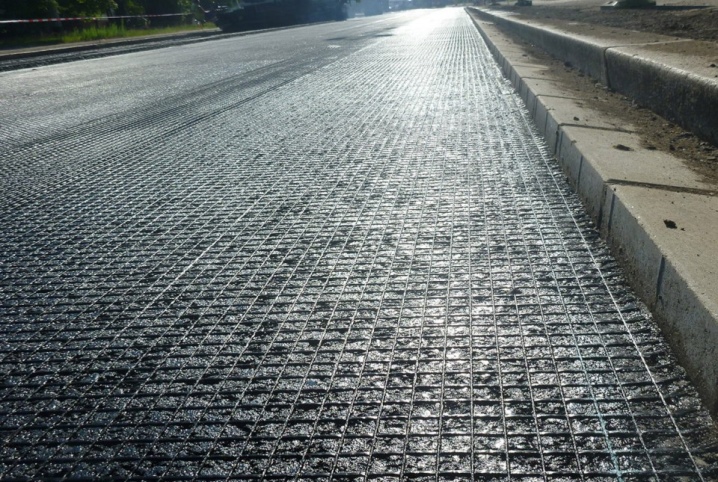
- Polypropylene. This polymer structure is formed from interconnected tapes, fastened with a special welding in a checkerboard pattern, with intermittent seams. Plastic polypropylene gratings successfully stabilize and strengthen soils with low bearing capacities.
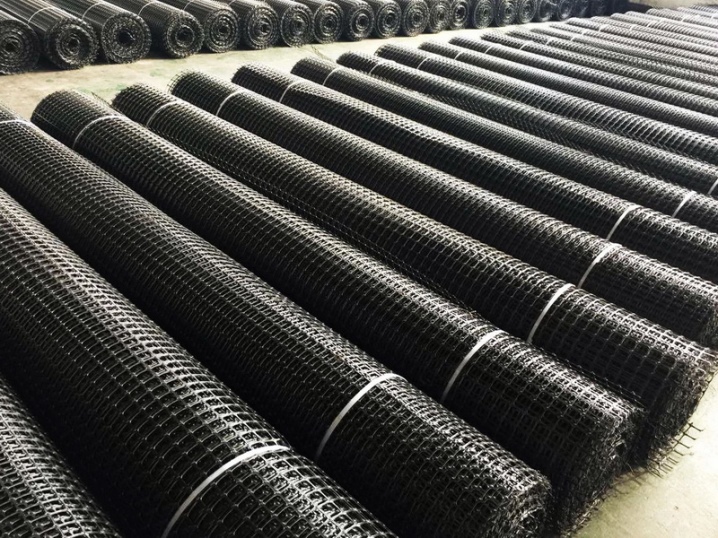
- Fiberglass... Such products are used in road construction. They have a flexible structure, reinforce asphalt concrete pavements, and reduce the effect of soil heaving on the canvas.
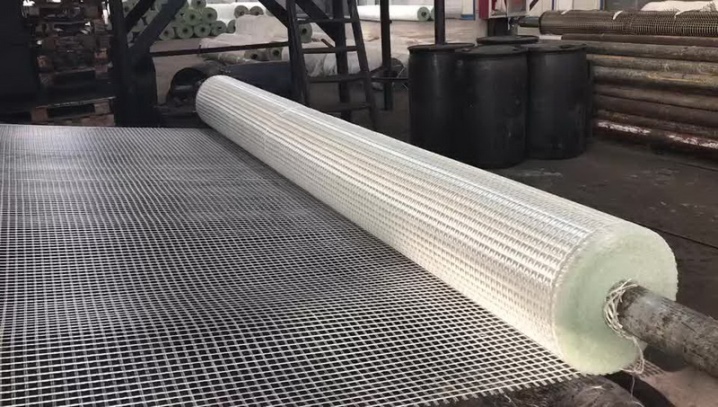
It is worth considering that fiberglass geogrids are more focused on the construction industry, they are rarely used in landscape architecture.
- Polyethylene. Flexible and resilient geogrid popular in landscape design. It is especially often used when decorating garden plots with lawns and lawns. Polyethylene geogrids are used on the weakest soils, used in the formation of retaining structures.
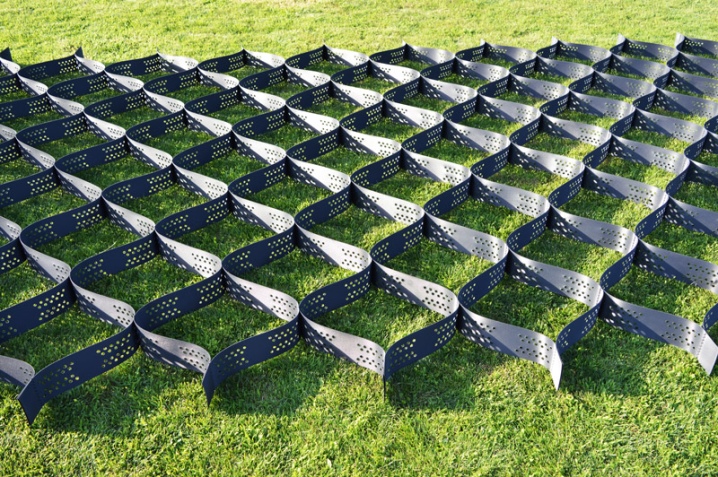
- PVA... Polyvinyl alcohol polymers are characterized by increased elasticity in comparison with other similar materials. This is the most modern type of plastics that has replaced polypropylene.
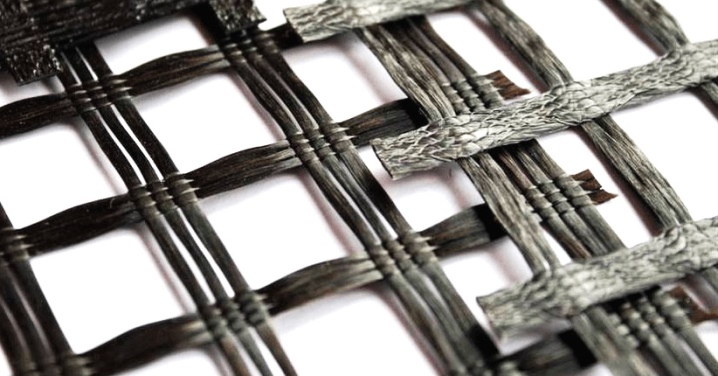
- Concrete. It is made by casting, it is used in objects with high mechanical stress. Such structures are used to create parking lots, roads, access roads.
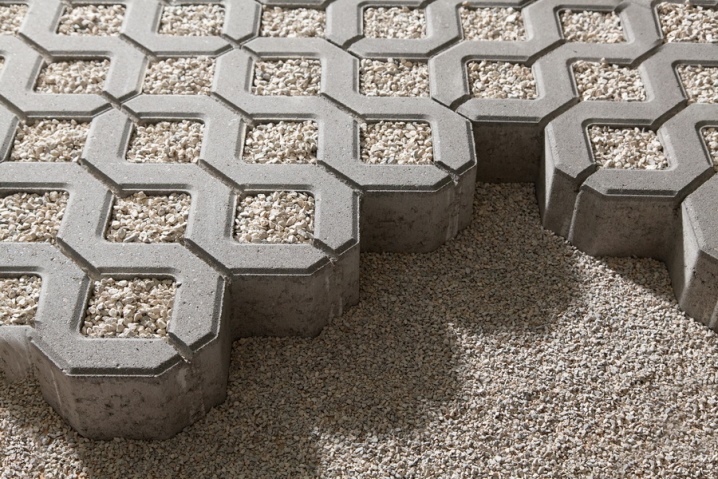
Depending on the choice of material that was used for the manufacture of the geogrid, its characteristics and parameters are determined. It is this factor that is the main criterion for choosing such devices, helping to determine the best area for their use.
Top manufacturers
Geogrids can still be called a relatively new device for Russia. That is why most of the products are delivered from abroad today. Noteworthy brands include the following brands.
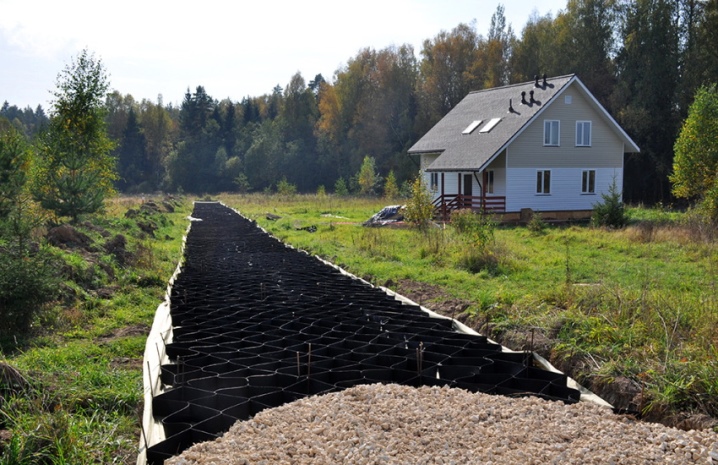
"Armogrid"
LLC GK Geomaterialy is a Russian company. The firm produces specialized products for landscape design in the Armogrid-Lawn series with a continuous HDPE mesh without perforation.The catalog also contains a perforated grille, which is distinguished by high reliability and tensile strength. "Armogrid" of this series is most often used in the arrangement of highways, parking lots, and other objects subject to high loads.

Tenax
A manufacturer from Italy, Tenax has been successfully operating on the market for over 60 years, providing the creation of high-quality polymer structures for various purposes. Today, the company's factories are successfully operating in the USA - in Evergreen and Baltimore, in the Chinese Tianjin. Among the most famous products are Tenax LBO - biaxially oriented geogrid, uniaxial Tenax TT Samp, triaxial Tenax 3D.

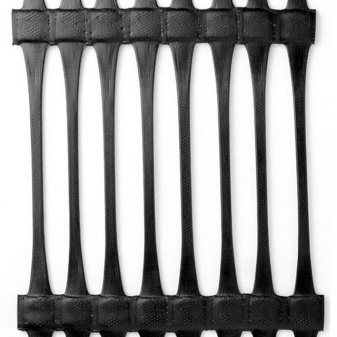
All products undergo strict quality control. The brand's geogrids are quite common in a wide variety of industries, from road construction to landscape and garden design. The manufacturer standardizes its products according to the requirements of European certification systems, the main raw material is polypropylene, which is chemically neutral and completely safe for the soil.
Bonar
The Belgian company Bonar Technical Fabrics is a well-known European brand specializing in the production of geotextiles and geopolymers. This brand produces uniaxial and biaxial meshes made of durable polymeric materials. The most popular are Enkagrid PRO, Enkagrid MAX products based on polyester strips... They are strong enough, elastic, and have a wide range of applications.
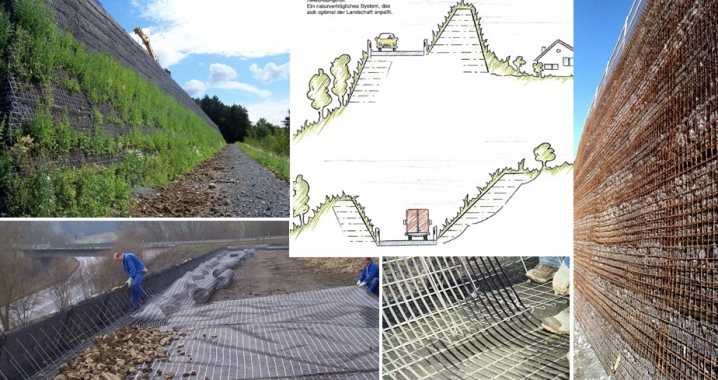
Armatex
The Russian company "Armatex GEO" has existed since 2005, specializing in the production of geosynthetic materials for various purposes. The company is based in the city of Ivanovo and successfully delivers its products to different regions of the country. Armatex geogrids have a biaxial or triaxial structure, made of polyester, polyethylene, polypropylene with perforation to increase their drainage capacity.
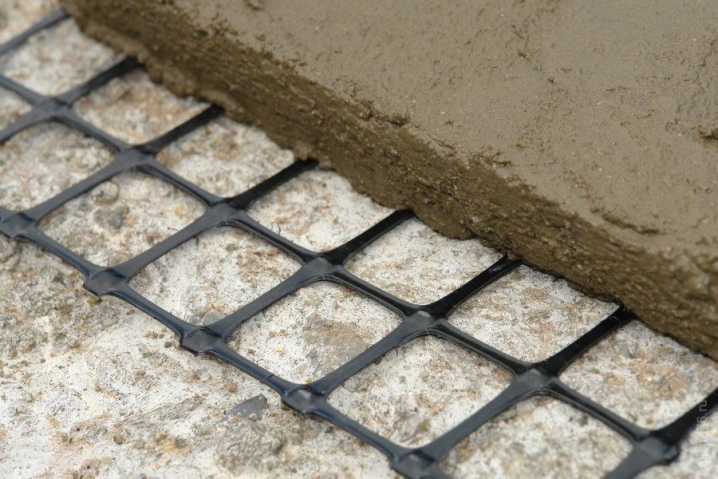
Tensar
Tensar Innovative Solutions, headquartered in St. Petersburg in Russia, is one of the world leaders in the production of geosynthetic materials. The domestic representative office manufactures products for the road construction industry. The head office is located in the UK. The Tensar brand produces RTriAx triaxial geogrids, RE uniaxial, Glasstex fiberglass, SS biaxial geogrids.
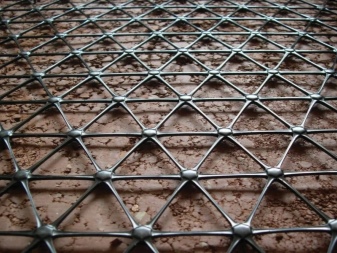
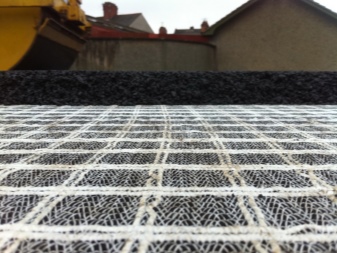
The products of these companies have managed to win the trust of a wide consumer audience, there is no doubt about the level of their quality. In addition, on the market you can find a lot of goods from China, as well as locally produced geogrids, created at small enterprises on an individual order.
For what geogrids are used for, see the next video.



































































The comment was sent successfully.